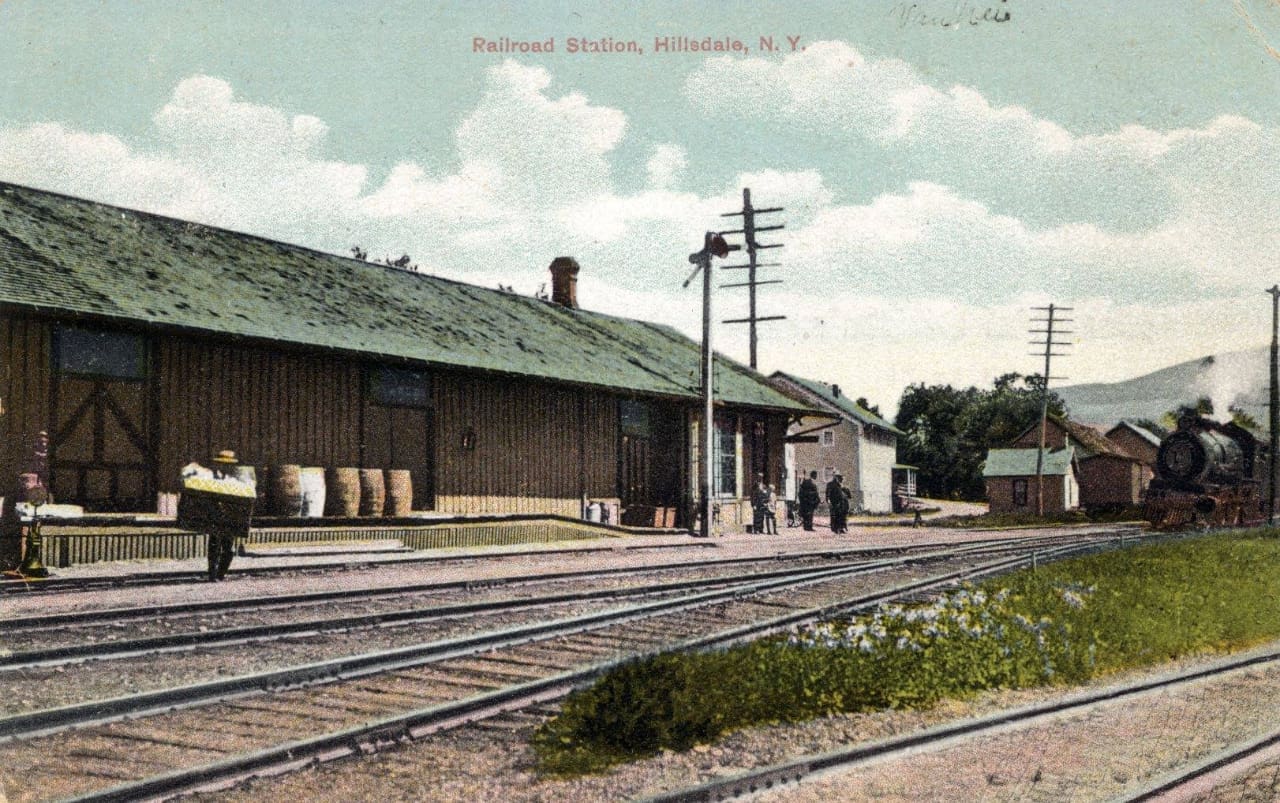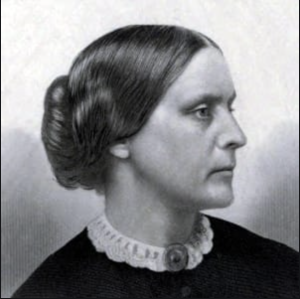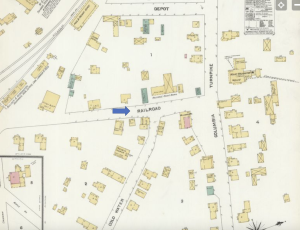Local History

The Possible Origin of Anthony Street
-by the Hillsdale Historians
One of the things we really enjoy about being the town historians is finding a particular facet of Hillsdale history and learning everything we can about it, and then sharing it with you. We select our topics in either of two ways: we see something and wonder about it, or someone asks us about something and we try our best to answer the question.
Not long ago, a reader speculated that Anthony Street was named for celebrated abolitionist, temperance crusader and suffragette Susan B. Anthony. We have often wondered how Anthony Street got its name and set out to see if we could make the SBA connection.
First of all, things get renamed all the time. Idlewild became Kennedy. Waterloo, Texas is now Austin. And Railroad Street in Hillsdale became Anthony Street. But who was Anthony?
A warning: the rest of what follows might be described best as “informed speculation.” “Informed” because we have spent quite a bit of time delving into the matter, and “speculation” because we can’t provide definitive proof of the hypothesis.
In November 2018, we published a blog post called “What’s In a Name” that traced the source of some of the more interesting names of streets and roads in and around Hillsdale. In researching for the post, we did our best to identify Hillsdale residents through the 18th, 19th and 20th centuries named Anthony who might have been prominent enough to deserve such an honor and came up dry – no farmers, merchants, politicians or preachers. (The one person in Hillsdale named Anthony — George Anthony — did jail time in 1903 for stealing chickens, so it is unlikely that he was honored with a street name.)
Then we started looking into the history of Susan herself, to see if there might be a connection. And, well, there just might be.
Susan Brownell Anthony was born in Adams, MA, in 1820. She was the second of seven children. When she was six, the family moved to Battenville, New York, not far from Saratoga Springs. When they lost the Battenville house during the Panic of 1837, they moved to Rochester, where in time they purchased a 32 acre farm along the Erie Canal.
The Anthony farm became known as a meeting place for anti-slavery activists, and Susan met a number of prominent abolitionists, including John Brown, Horace Greeley and Frederick Douglas. In 1851, she met Elizabeth Cady Stanton, who was already emerging as the leader of the women’s rights movement.
There is, of course, much more to say about Susan B. Anthony, but for our purposes what is notable is that both she and Elizabeth Cady Stanton crisscrossed New York state for several years, arguing for women’s rights and in particular women’s suffrage. Jim Benton, librarian of the Columbia County Historical Society, confirmed that Susan B. Anthony spoke at least twice in each New York county during the suffrage campaign.
We also know that Anthony was mentioned in the pages of the Hillsdale Harbinger, in some cases with no explanation of who she was – an indication that she was well-known in the area.

The Anthony farm in Rochester, NY
Our last two pieces of circumstantial evidence are a Sanborn Map Company fire insurance map of Hillsdale, dated 1904. It clearly shows that today’s Anthony Street was then called “Railroad.”
It should also be noted that due to the sometimes emotional response to the causes she championed (Abolition, Temperance and Suffrage), for much of her adult life Anthony was reviled by many. However, by the end of the 19th century, her reputation had been rehabilitated and she became a revered figure who in 1900 celebrated her 80th birthday with a dinner in the White House. Less than two months after her death, she was the subject of a glowing tribute at a meeting of the Columbia County chapter of the Women’s Christian Temperance Union Institute. And 13 years later, Anthony was still so beloved that the 19th constitutional amendment granting woman the right to vote came to be known as the “Susan B. Anthony Amendment.”

Sanborn Map Company fire insurance map showing a street named Railroad.
One more consideration: Railroad Street (or Lane) was called that because it stretched from the Columbia Turnpike (aka Main Street, aka Rt. 23) to — you guessed it — the New York and Harlem Railroad, which was still making daily trips between New York and Chatham. If the name change had occurred in, say, 1974, it could be explained by the fact that rail service north of Dover Plains was abruptly terminated in 1972. But Railroad was changed to Anthony sometime between 1904 and 1908, while there was still rail service, so to us it seems likely that something of significance happened that people felt should be commemorated. Could that be the 1906 death of Susan B. Anthony?
Our circumstantial evidence says it is certainly possible. Meanwhile, we haven’t found any hard evidence that it’s not true.
Follow the Hillsdale Historians and see their latest blog posts as well as past stories by signing up here
